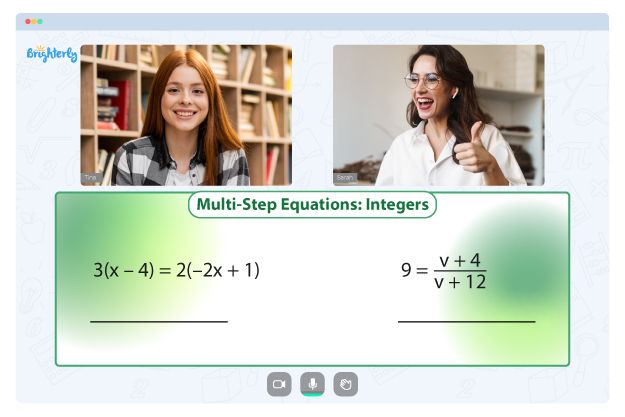Standard Form – Definition with Examples
reviewed by Jo-ann Caballes
Updated on October 3, 2024
Here at Brighterly, we provide resources and math classes to make learning math easy and fun for kids.
Today we’re covering standard form, a fundamental mathematical principle that underpins many math concepts.
In this article, we’ll cover standard form math in relation to numbers, fractions and equations, provide standard form math examples and share solved and practice math problems so you can cement your learning.
What is standard form?
The standard form definition is a uniform way of expressing numbers, equations and fractions that may otherwise be complex and difficult to work with. Standard form math allows us to work with these numbers more easily and turn complex problems into more easily understandable and solvable ones.
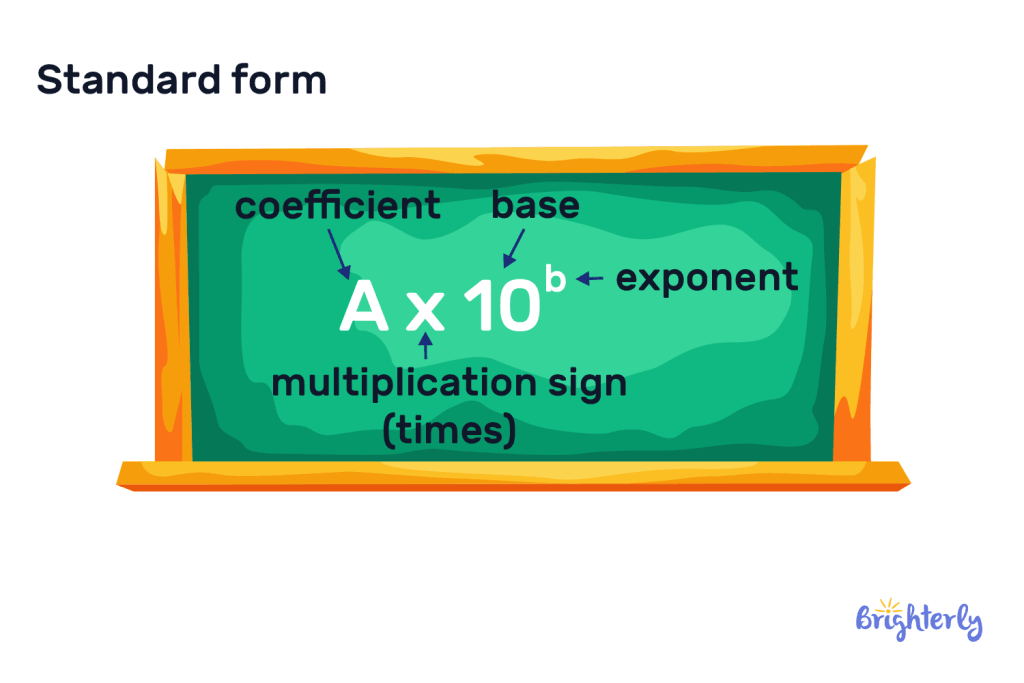
Below we’ll answer the question, “What does standard form mean?”
Standard form of a number
The standard form of a number is where we express a very large or very small number using a number between one and nine (a single non-zero digit) with a decimal point and digits following it, multiplied by a power of 10. The standard form of a number is also known as scientific notation because it’s integral to working with highly complex numbers in scientific formulae.
This is especially useful when working with enormous or minuscule numbers because it makes them easier to work with while preserving their magnitude.
Examples of a standard form of numbers
Here are some simple examples of standard forms in math in relation to numbers:
- 370 = 3.7 x 102
- 8,400 = 8.4 x 103
- 51,000 = 5.1 x 104
- 930,000 = 9.3 x 105
- 7,500,000 = 7.5 x 106
- 42,000,000 = 4.2 x 107
- 190,000,000 = 1.9 x 108
- 2,900,000,000 = 2.9 x 109
- 63,000,000,000 = 6.3 x 1010
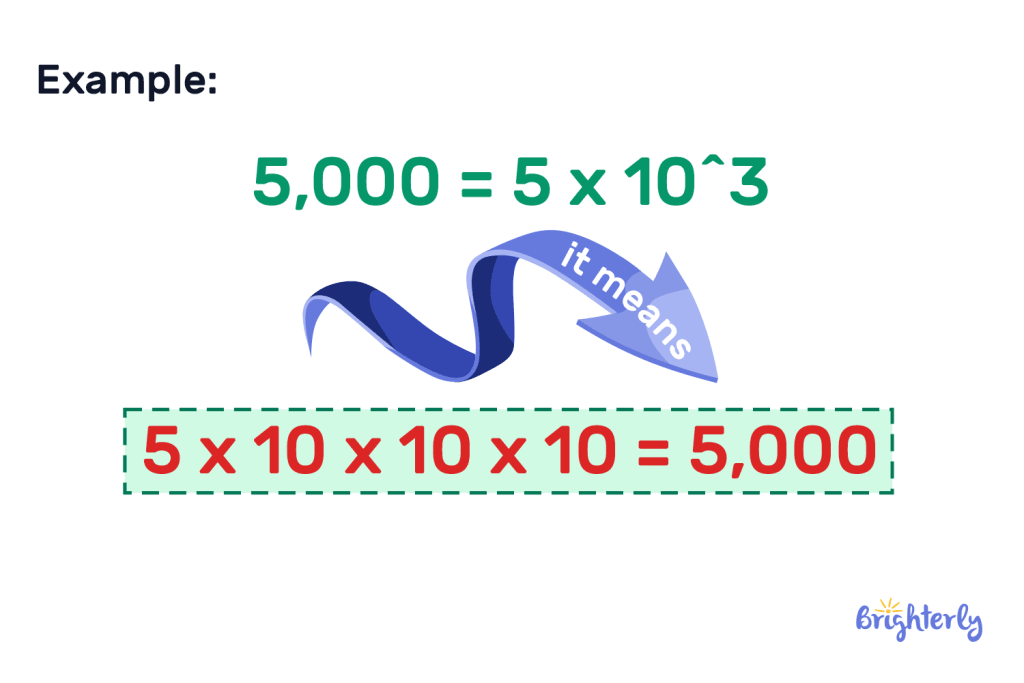
These are also standard notation examples. You’ll notice a pattern here in that the number of the power of 10 your decimal is multiplied by increases with every digit placed on your original number.
Standard form of fraction
The standard form of a fraction is the simplest or lowest form of the fraction. To get to the standard form of your fraction, both numbers need to be their lowest common denominators. This means the numerator and denominator share no common factors and can no longer be divisible by the same numbers.
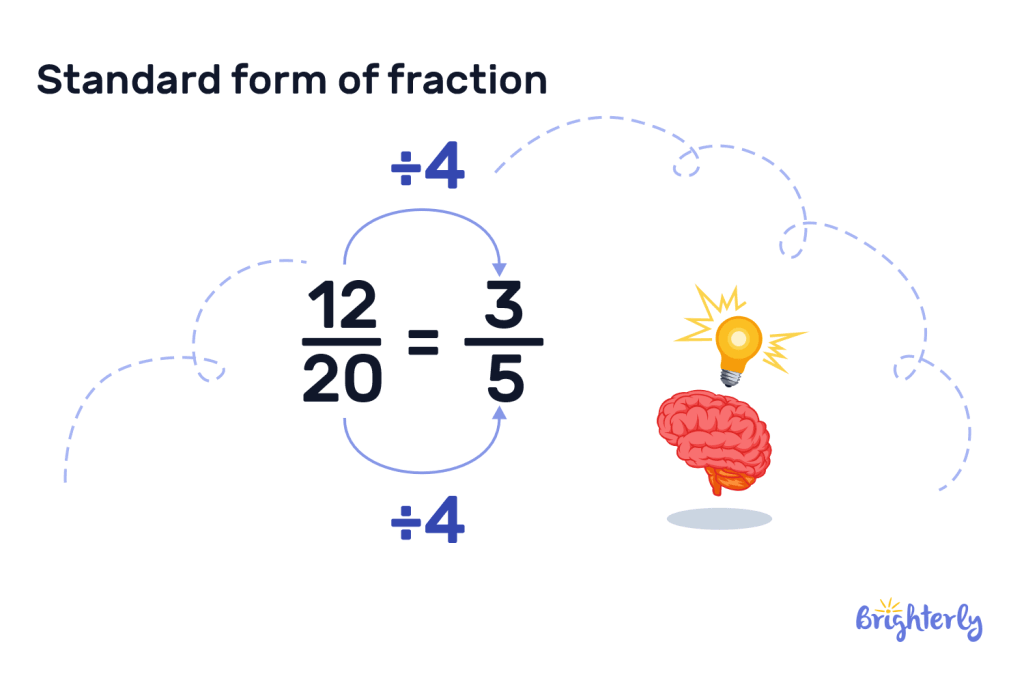
Similar to the standard forms of numbers, breaking down fractions into their standard forms makes them easier to work with and understand, taking away a lot of their complexity.
For example, if we take 12/16, we can simplify it down to 3/4, which is its standard form and easier to work with than our original fraction.
Standard form of equations
There are two types of equations that have standard forms that we’ll cover below:
- Standard form of a polynomial
- Standard form of a linear equation
Standard form of polynomial
The standard form of a polynomial organizes its terms into descending order based on their exponents.
Polynomials are algebraic expressions made up of variables (also known as indeterminates) and coefficients. We can carry out addition, subtraction and multiplication on polynomials, as well as non-negative integer exponents, but we cannot carry out division on them.
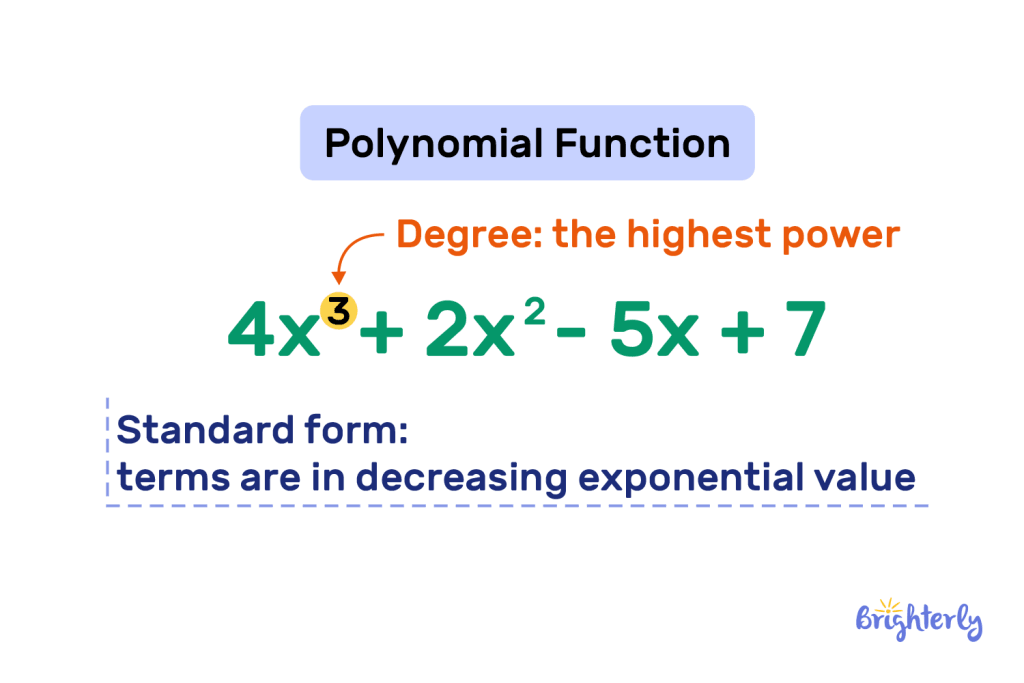
If we look at a polynomial standard form, we’ll see that it makes the polynomial a more consistent and easy-to-read expression. Take the example of a standard form of 2×3 + 5×2 + 7, which is already in its standard form and makes its constituent terms easy to read and understand.
Standard form of a linear equation
The standard form of a linear equation makes it more harmonious, expressing it as Ax + By = C. In this formula, A, B and C are all integers, and A is also non-negative. By reducing linear equations to their standard form, we can perform mathematical operations on them and easily compare different linear equations to one another.
An example of standard form in a linear equation is 3x + 2y = 6.
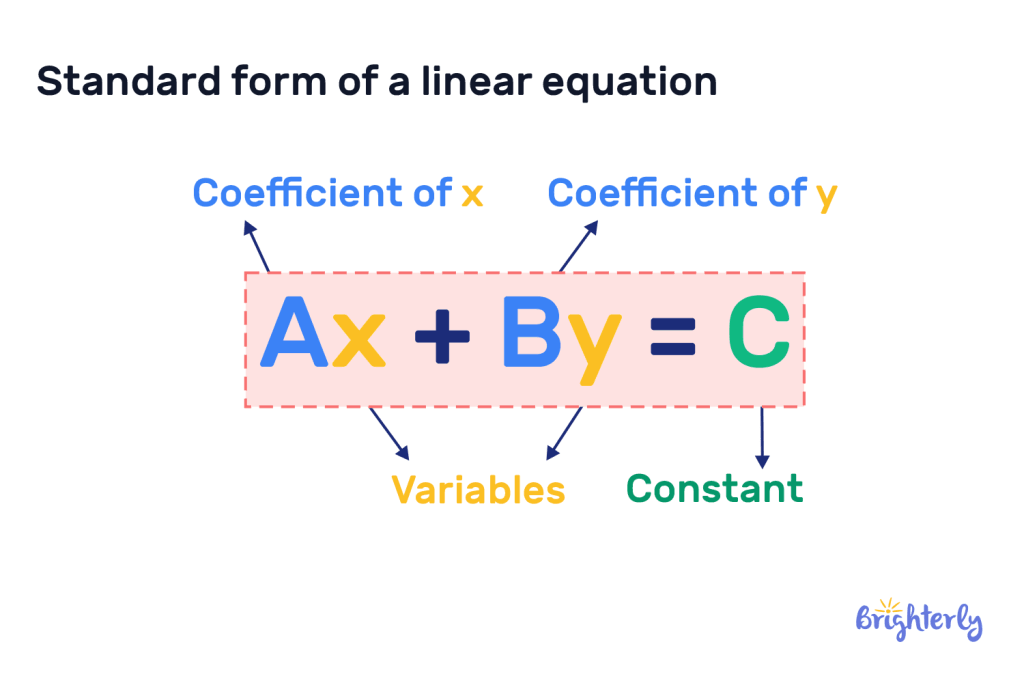
Standard form formula
There is no standard form math formula; instead, it’s a dynamic concept that will change depending on the equation, expression or number you’re dealing with. Here’s some guidance on different standard form formulae:
Standard form of a number formula
The basic formula for the standard form of a number is A × 10ⁿ.
As we saw above, the standard form of a very large number is represented by its first positive integer followed by a decimal point and its remaining positive integers, multiplied by 10 to the power of 1 less than the total number of places in the number (n).
As a standard form math example, 950,290,000 would be expressed in its standard form as 9.5029 x 108 because there are 9 places in the number.
Standard form of a fraction formula
There is no single formula to find the standard form of a fraction. Instead, you should find all of the numbers that the numerator and denominator are divisible by. Divide them both by the largest number they are divisible by to reduce them to their lowest common denominator and therefore their standard form.
Standard form of a linear equation formula
There is a standardized formula to help you work out the standard form of a linear equation:
Ax + By = C
Standard form of a polynomial equation
There are two steps in the formula to work out the standard form of a polynomial equation:
- Combine like terms.
- Drop your degree from left to right.
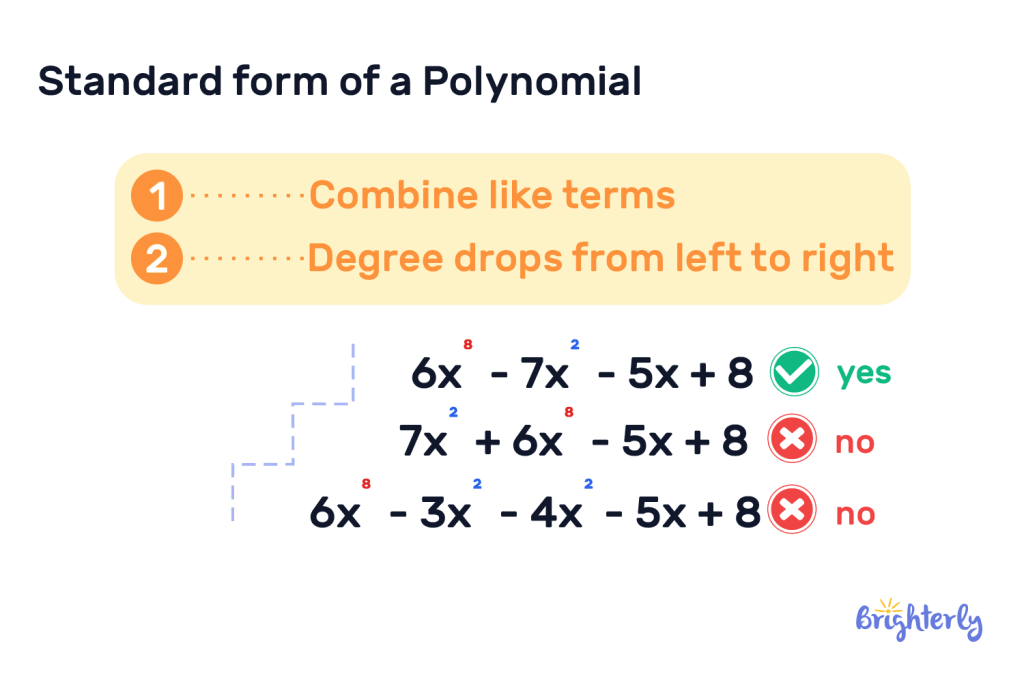
Real-life examples of standard form
Standard forms are commonly used in scientific language and concepts. Examples of standard form in real life include:
- The speed of light: 3 x 10⁸ m/s
- Light years and how far light travels in one year: 9.46 × 10¹⁵ km
- A femtometer (also the approximate length of a quark): 1 x 10⁻¹⁵ meters
- The distance between subatomic particles: 10−10 meters
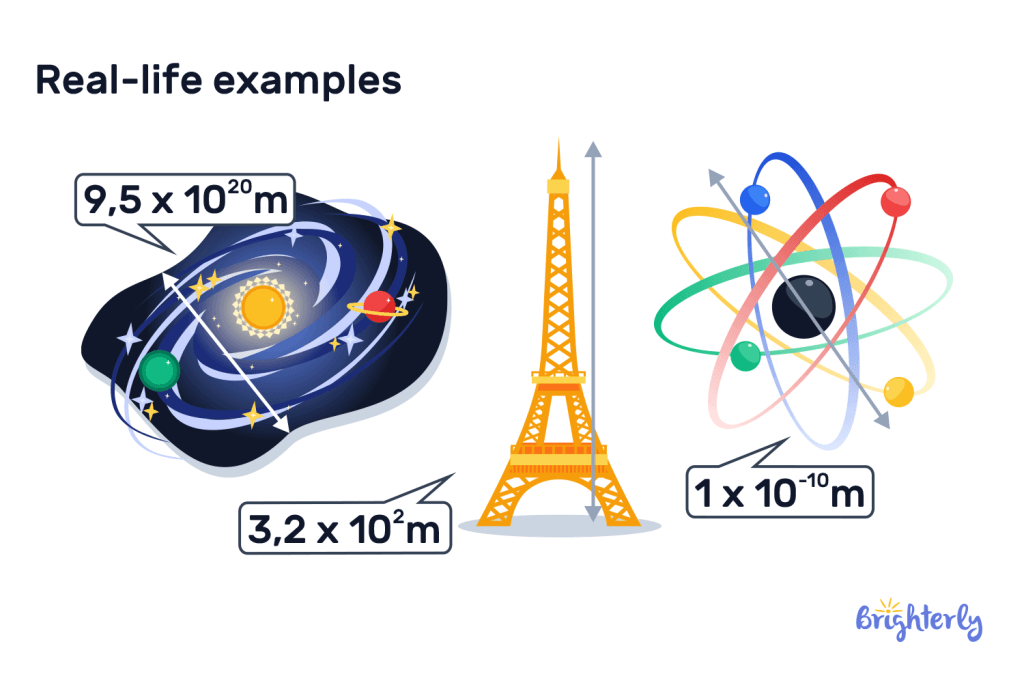
Solved math tasks: examples
Here, we’ve included some standard form math tasks along with their answers so you can put your knowledge to the test and practice standard forms.
Solved math task 1
Write the number in standard form: 3,297,000.
Answer:
| 3.297 x 106. |
This is because there are six digits after your first digit and the whole number once reduced to a decimal.
Solved math task 2
Find the standard form of the fraction 25/40.
Answer:
|
5/8. |
The largest number that both the numerator and denominator are divisible by is 5, so dividing both by 5 gives us our lowest common denominators.
Solved math task 3
Express the speed of light, which is 3 x 10⁸ m/s in its common form, as its whole number.
Answer:
| 300,000,000 m/s |
You complete the sum of the standard form to get to its whole number.
Standard form: practice math problems
Standard form worksheets
Brighterly offers math worksheets that help kids practice their knowledge of standard forms and many other related math problems:
- 2-digit divisors worksheets
- Standard and expanded form worksheets
- Equations with fractions worksheets
- Finding equivalent fractions worksheets




